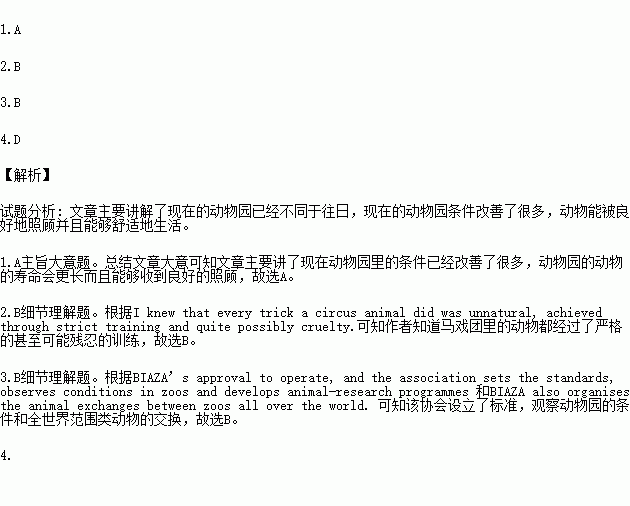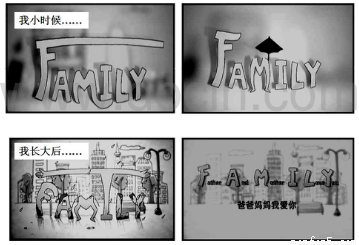题目内容
As a child, visiting the zoo was more a punishment than a treat. I didn’t find the chimps’ tea parties funny, nor the bird shows entertaining. Feeding time for seals was less painful, but their performances still seemed like they belonged more in a circus.
And I hated circuses, especially the animal acts — men teasing lions, girls balancing on elephants and monkeys playing football. I knew that every trick a circus animal did was unnatural, achieved through strict training and quite possibly cruelty.
Happily, during my lifetime public attitudes and the law have changed. Circuses using wild animals are now almost extinct, and zoos have definitely evolved.
When my children were young, I occasionally took them to our local zoo. The elephants were in tiny cages and the gorillas looked bored as they sat peeling bananas and staring at teasing visitors. Each cage had a sign which listed the animal’s name and where it came from. But, back then, there was little information included about the environmental challenges they faced.
As a result, environmentalists and animal lovers often oppose zoos. “Animals belong in the wild,” is a common — and understandable — complaint. But what do the animals themselves prefer?
Generally speaking, zoo animals have a longer life. But — you may protest — they are not free. What? Free to be hunted and killed, free to die of hunger or thirst? Maybe sitting in a cage eating bananas isn’t so bad.
Not that such conditions are acceptable in modern zoos, due to the work of BIAZA, the British and Irish Association of Zoos and Aquariums. These days every zoo requires BIAZA’s approval to operate, and the association sets the standards, observes conditions in zoos and develops animal-research programmes, both in the UK and abroad. BIAZA also organises the animal exchanges between zoos all over the world.
Consequently, today, most zoo animals are born and raised in zoos, live in large, comfortable enclosures and are cared for by well-trained, knowledgeable and caring zoo employees. Of course it’s no substitute for living in the wild but unfortunately this isn’t always possible. Meanwhile, why not visit your local zoo and decide for yourself?
1.The passage is mainly about __________.
A. how zoos have improved
B. whether a zoo should be closed down
C. a new environmental organisation
D. the difference between zoos and circuses
2.From Paragraph 2, we can guess that the writer believes circus animals __________.
A. had much shorter lives than those in the wild
B. were not treated well by their trainers
C. should have been placed in zoos
D. were not as intelligent as those in zoos
3.Which of the following roles are performed by BIAZA?
A. Organising animal study projects and training zoo workers.
B. Checking zoo conditions and arranging animal exchanges.
C. Designing zoos and approving zoo operations.
D. Caring for ill animals and setting zoo standards.
4.Which of the following statements about zoos would the writer agree with?
A. Zoo animals should be freed into the wild.
B. Zoos are more popular now than in the past.
C. Zoo animals are more restricted than in the past.
D. Zoos now provide caring living conditions for animals.


 tare falling on something further down the street.
tare falling on something further down the street. schools for children there.”
schools for children there.”